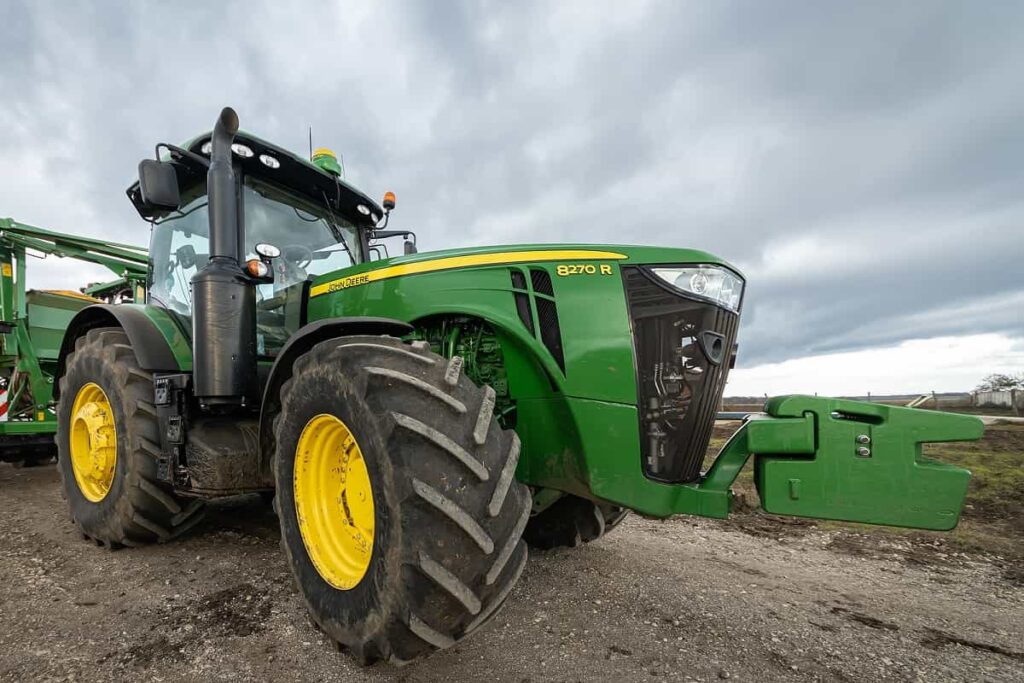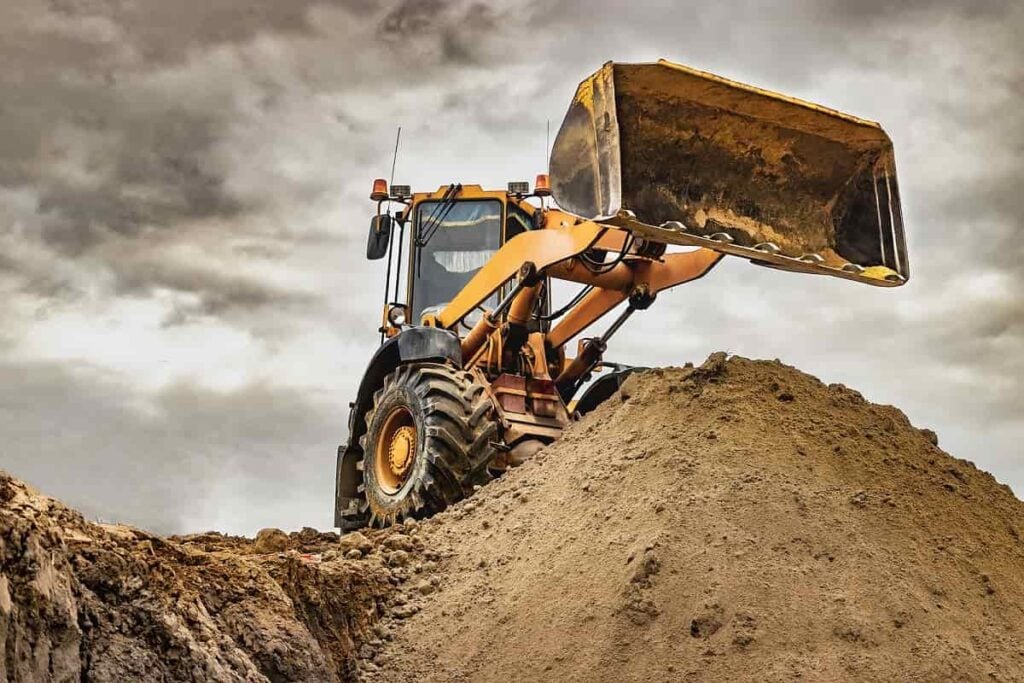Built Robotics and Autonomous Construction Equipment
Table of contents

In the U.S. alone, 453,200 construction equipment operators plied their trade in 2018, many of whom used earth moving machines to move dirt around for various reasons. While operating an earthmover may sound like fun to an 8-year-old, the job itself mostly fits the three d’s – dull, dirty, and dangerous. Many road construction projects require you to work at night, and you’ll be required to work in nearly all weather conditions. Sounds like just the job for some robots.
Many industries might learn from how the military operates autonomous aerial vehicles – drones – to monitor who in the world needs some more freedom. Typically, one operator will oversee multiple drones which are largely automated but often require a “human in the loop.” That’s the vision for Built Robotics, a company that’s offering autonomy to the $1 trillion earth moving industry.
About Built Robotics
Founded in 2016, San Francisco startup Built Robotics first came across our radar in 2017 when we published a piece on “8 Startups Building Robotic Construction Workers.” At the time, Built was coming out of stealth and talking about taking the sensors from self-driving cars and retrofitting them into construction equipment. Today, Built’s technology transforms existing construction equipment — including excavators, bulldozers, and skid steers — into fully autonomous robots. The AI guidance systems can be installed on existing equipment from any manufacturer, while still maintaining complete manual operation capabilities.

Credit: Built Robotics
This past February, Built Robotics debuted the country’s first commercially deployed autonomous construction equipment at North America’s largest construction trade show, CONEXPO-CON/AGG. Conference attendees in Las Vegas were able to operate a Built robot located in Houston and see first-hand how autonomous heavy equipment is the way forward.
And it wasn’t just a fancy demo. These autonomous capabilities are now available to contractors and heavy machine operators. The upgraded equipment is able to perform common tasks fully autonomously, such as digging trenches, excavating foundations, and grading building pads. An article by Construction Dive talks about implementation and pricing. “Upgrading and training to use the software through Built can take one or two days,” after which “customers then pay a monthly subscription fee for using the software, as well as an hourly fee based on the usage of the robot.”
As for the operators who used to sit inside these pieces of equipment, they’ll now become Robotic Equipment Operators (REOs). Built Robotics is rolling out a training program which emphasizes the increasing value add that an operator is expected to provide now that the robot does all the monotonous work. They’ve partnered with industry groups including unions to ensure that the perceptions of this technology are correctly formed. After becoming an REO, you won’t spend most your time moving dirt. Instead, you’ll be required to be comfortable with construction drawings and plans and capable of navigating Excel spreadsheets and popular CAD programs.
We recently looked at autonomous shipping company Sea Machines which is also operating under a similar business model. Keep the vehicle the same and then retrofit it with a technology solution that allows it to be operated autonomously as an option. When a large equipment manufacturer wants to integrate autonomy into their product offering, they’ll need to make a build-vs-buy decision – purchase what’s already been operating successfully or learn from the mistakes others have made and build it in house.
Caterpillar Autonomous Trucks
We’ve previously talked about Mining Technologies For the Mines of the Future where they’re using remotely operated quarry drilling machines, electric underground mining equipment, and fleets of self-driving mining trucks. Just this past spring, Caterpillar (CAT) announced that they have now hauled 2 billion tons using autonomous mining trucks, up from 1 billion tons as of November 2018. At 400 tons per load, that equates to about 5 million truck loads of stuff moved by Cat autonomous trucks since they first began operating.
Caterpillar now has more than 275 autonomous trucks in operation that have traversed over 41 million miles – the equivalent of driving from the West Coast of the United States to the East Coast, then back, 7,675 times in a row – all without one lost-time injury. Having realized success in the autonomous dump truck game for six years now, it’s no surprise to see Caterpillar introducing more autonomous options, some requiring line-of-sight to control, and others located offsite. One remote station is built to mimic the actual cab of a Cat dozer, letting operators work from a seated position using familiar controls. Operators can also view the left and right cutting edges, the top/center of the blade, and the rear of the machine, including the ripper. What this means is that now anyone can operate these machines from anywhere in the world.
Democratizing Construction Jobs
For the small fraction of D&I folks out there pushing for equal representation in blue-collar occupations, you’ll be pleased to hear that the equipment operator profession is soon to be democratized. With the advent of 5G, your typical construction equipment operator is equally likely to hail from Georgia the Country as they are to hail from Georgia the State. An Upwork-like platform might list out dozens of equipment operators across the planet, each with their own specialties, availabilities, and of course, ratings. The best operators will be the ones who are able to manage multiple machines on multiple projects with minimal downtime. Just look at the slick dashboards they’re building which allow an operator to control an earth moving machine from any keyboard.

Back of the napkin math tells us that the run rate for construction equipment operators in the U.S. alone is around $21.8 billion (453,200 X 48,160 per year). The number of operators is expected to grow by 44,000 roles over the next ten years, and we can expect to see “centers of excellence” emerge in large cities throughout India where money goes a whole lot further. Similar to how back-office functions moved to low-cost emerging market centers, expect to see many of these jobs requiring a human-in-the-loop to be filled by anyone who is a PhD – poor, hungry, and determined.
Conclusion
People are understandably skittish about a stock market that doesn’t seem to reflect what’s taking place around it. In bull markets or bear markets, companies are constantly looking to cut costs and make their operations appear to be more environmentally friendly so as not to upset the fragile ESG types. Any solution that can reduce costs while improving throughput and increasing safety will be welcomed with open arms by companies who are also experiencing a shortage of competent labor.
Sign up to our newsletter to get more of our great research delivered straight to your inbox!
Nanalyze Weekly includes useful insights written by our team of underpaid MBAs, research on new disruptive technology stocks flying under the radar, and summaries of our recent research. Always 100% free.















